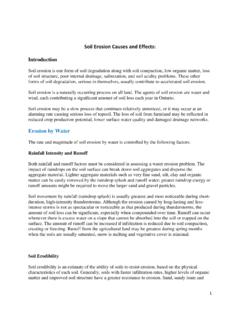Transcription of The Transtheoretical Model of Health Behavior Change
1 THE S CIENCEOFHEALTHPROMOTIONB ehavior ChangeThe Transtheoretical Model of Health BehaviorChangeJames O. Prochaska, Wayne F. VelicerAbstractThe Transtheoretical Model posits that Health Behavior Change involves progress throughsix stages of Change : precontemplation, contemplation, preparation, action, maintenance,and termination. Ten processes of Change have been identified for producing progress alongwith decisional balance, self-efficacy, and temptations. Basic research has generated a ruleof thumb for at-risk populations: 40 % in precontemplation, 40 % in contemplation, and20% in preparation. Across 12 Health behaviors, consistent patterns have been found be-tween the pros and cons of changing and the stages of Change .
2 Applied research has dem-onstrated dramatic improvements in recruitment, retention, and progress using stage-matched interventions and proactive recruitment procedures. The most promising outcomesto date have been found with computer-based individualized and interactive most promising enhancement to the computer-based programs are personalized counsel-ors. One of the most striking results to date for stage-matched programs is the similaritybetween participants reactively recruited who reached us for help and those proactively re-cruited who we reached out to help. If results with stage-matched interventions continue tobe replicated, Health promotion programs will be able to produce unprecedented impacts onentire at-risk populations.
3 (Am J Health Promot 1997;1211]:38-48.)Key Words: Transtheoretical Model , Stages of Change , Proactive Recruitment,Computerized Interventions, Decisional Balance, Processes of ChangeJames o. Prochaska, PhD, and Wayne F. Velic~ PhD, are at the Cancer Prevention ResearchCent~ University of Rhode Island, Kingston, Rhode reprint requests to James o. Prochaska, Cancer Prevention Research Center, 2 Chafee Road,University of Rhode Island, Kingston, RI 02881-0808; manuscript was submitted April 1, 1997; revisions roere requested April 7, 1997; the manuscript was accepted forpublication May 5, 199 ZAm J Health Promot 1997;12(1) 1997 by American Journal of Health Promotion, $ + 0 The Transtheoretical Model uses atemporal dimension, the stages ofchange, to integr~.
4 Te processes andprinciples of Change from differenttheories of intervention, hence thename Transtheoretical . This modelemerged from a comparative analysisof leading theories of psychotherapyand Behavior Change . The goal was asystematic integration of a field thathad fragmented i:ato more than 300theories of The com-parative analysis i,zlentified 10 distinctprocesses of Change , such as con-sciousness raising from the Freudiantradition, contingency managementfrom the Skinnerian tradition, andhelping relationships from the Ro-gerian an empiric~.l analysis of self-changers compared to smokers inprofessional treatments, we assessedhow frequently each group used eachof the 10 Our researchparticipants kept saying that theyused different processes at differenttimes in their straggles with naive subjects were teachingus about a phenomenon that was notincluded in any of the multitude oftherapy theories.
5 They were revealingto us that Behavior Change unfoldsthrough a series of the initial studies of smok-ing, the stage Model rapidly expand-ed in scope to investigationsand applications with a broad rangeof Health and mental Health behav-iors. These include alcohol and sub-stance abuse, anxiety and panic dis-orders, delinquency, eating disordersand obesity, high-fat diets, AIDS pre-vention, mammography screening,medication compliance, unplannedpregnancy prevention, pregnancyand smoking, ration testing, seden-38 American Journal of Health Promotiontary lifestyles, sun exposure, and phy-sicians practicing preventive medi-cine.
6 Over time, these studies haveapplied, expanded, validated, andchallenged the core constructs of thetranstheoretical CONSTRUCTSS tages of ChangeThe stage construct is importantin part because it represents a tem-poral dimension. Change impliesphenomena occurring over time, butsurprisingly, none of the leading the-ories of therapy contained a coreconstruct representing time. Behav-ior Change was often construed as anevent, such as quitting smoking,drinking, or overeating. The trans-theoretical Model construes changeas a process involving progressthrough a series of six is the stage inwhich people are not intending totake action in the foreseeable future,usually measured as the next 6months.
7 People may be in this stagebecause they are uninformed or un-derinformed about the consequencesof their Behavior . Or they may havetried to Change a number of timesand become demoralized about theirabilities to Change . Both groups tendto avoid reading, talking, or thinkingabout their high risk behaviors. Theyare often characterized in other the-ories as resistant or unmotivated cli-ents or as not ready for therapy orhealth promotion programs. The factis, traditional Health promotion pro-grams were not ready for such indi-viduals and were not motivated tomatch their is the stage inwhich people are intending tochange in the next 6 months.
8 Theyare more aware of the pros of chang-ing but are also acutely aware of thecons. This balance between the costsand benefits of changing can pro-duce profound ambivalence that cankeep people stuck in this stage forlong periods of time. We often char-acterize this phenomenon as chroniccontemplation or behavioral procras-tination. These folks are also notready for traditional is the stage in whichpeople are intending to take actionin the immediate future, usually mea-sured as the next month. They havetypically taken some significant ac-tion in the past year. These individu-als have a plan of action, such asjoining a Health education class, con-sulting a counselor, talking to theirphysician, buying a self-help book, orrelying on a self- Change are the people we should re-cruit for such action-oriented pro-grams as smoking cessation, weightloss, or is the stage in which peo-ple have made specific overt modifi-cations in their life styles within thepast 6 months.
9 Since action is observ-able, Behavior Change often has beenequated with action. But in the trans-theoretical Model , action is only oneof six stages. Not all modifications ofbehavior count as action in this mod-el. People must attain a criterion thatscientists and professionals agree issufficient to reduce risks for smoking, for example, the fieldused to count reduction in the num-ber of cigarettes as action, or switch-ing to low tar and nicotine , the consensus is clear--only to-tal abstinence counts. In the dietarea, there is a consensus that lessthan 30% of calories should be con-sumed from fat. But there are thosewho believe that this guideline needsto be lowered to 25% or even 20%.
10 Maintenance is the stage in whichpeople are working to prevent re-lapse but they do not apply changeprocesses as frequently as do peoplein action. They are less tempted torelapse and increasingly more confi-dent that they can continue theirchanges. Based on temptation andself-efficacy data, we estimated thatmaintenance lasts from 6 months toabout 5 years. While this estimatemay seem somewhat pessimistic, lon-gitudinal data in the 1990 SurgeonGeneral s report gave some supportto this temporal After 12months of continuous abstinence,the percentage of individuals who re-turned to regular smoking was 43%.It was not until 5 years of continuousabstinence that the risk for relapsedropped to 7%.








